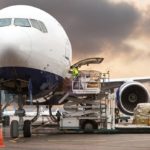The greatest game-changer in a generation is finally showing its true value, says Alan Peaford as he celebrates the realisation of the vision of in-flight connectivity.
It was probably 15 years ago that the late, great doyen of aviation journalism, Brendan Gallagher, chided me for my enthusiasm about the “game-changing A3XX”. Brendan was adamant that any game being changed by the new Airbus Goliath was nothing compared to the real revolution for aviation – connectivity.
Of course, we mocked. As Brendan talked about the challenges of reducing the size and weight of vital antennae (or the bent coat-hangers, as we dubbed them), none of us imagined that today we would be looking at a $4 billion sector that is forecast to grow by 16.5% a year to reach more than $13 billion by 2025.
Factors such as growing demand for in-flight connected services, increasing penetration of smartphones, and rising numbers of airline passengers are likely to aid the growth of the in-flight Wi-Fi market.
Connected Aircraft
At Paris Airshow last year I got to see Brendan’s vision realised in the shape of a Boeing 757 kitted out with technology giant Honeywell’s Connected Aircraft.
It’s no longer about the frustratingly slow and expensive passenger Wi-Fi services that dog many of the early-adopter airlines – this is about what is possible, and it is possible now.
Kristin Slyker, VP, Connected Aircraft, Honeywell, explained that the Connected Aircraft is about taking the data that’s generated to drive benefits, such as “a 35% reduction in maintenance operating cost” or “10 to 100 times faster Wi-Fi” for passengers.
We also found out more about a number of Honeywell’s apps, including Weather Information Services, which gives pilots updated in-flight weather data; Flight Efficiency which optimises flight operations; and Connected Maintenance, which enables more efficient and predictive MRO.
Honeywell’s Brian Davis, Vice President of Airlines, said: “A big part of the story is going to be the mechanisms to move data; another is the concept of data itself and how best to utilise it.”
The need for speed
The key to all of these benefits is the bandwidth and speed that allows greater connectivity between aircraft, their systems and the ground; the latest high-speed satellite communications; and developing aircraft into nodes on the Internet that can talk to the ground and each other.
The Ka-band – utilised by Inmarsat’s GX system – gave the breakthrough that the industry needed, by enabling the data capacity to bring the various elements together.
Over the past decade there have been a great number of companies battling for the connectivity space, with Ka-band potential and Ku-band reality going toe to toe.
Joining forces
Earlier this month Panasonic Avionics and Inmarsat announced a strategic collaboration that will see the two companies marketing each others’ products to commercial airlines and collaborating on the development of a next-generation GX Aviation terminal, as well as new connectivity-enabled services, data analytics and technology to improve overall end-to-end performance.
Inmarsat is now the exclusive supplier of Ka-band satellite capacity to Panasonic. The two companies will also collaborate on the development of a next-generation GX Aviation terminal.
This is a dramatic shift in the competitive market landscape, as the largest Ku-band provider moves its focus to the Ka-band spectrum. Panasonic will continue to invest in its Ku-band network to support more than 2,200 aircraft online in the Ku-band space today, but the messaging from Panasonic is clear: Ka-band is the focus going forward.
Passenger benefits
Faster speeds could finally enhance the passenger experience. While US passengers have enjoyed live TV and fast connections to the Internet on their personal devices for some time, other parts of the world have suffered.
According to Inmarsat demand for quality onboard Wi-Fi is significantly outstripping supply on the fleets of airlines across the globe – less than half of passengers globally (45%) have travelled on flights where it was offered.
“There’s nothing quite like watching your favourite sporting event on the seat-back, shopping for products that are relevant to your life and interests, or using apps that personalise your journey,” Hideo Nakano, CEO of Panasonic Avionics said.
It is undeniable that passengers want the opportunity to remain connected wherever they are. According to the latest Inmarsat global in-flight connectivity survey, nine out of ten premium business travellers would want to remain connected in the air to enable them to continue working.
Parents travelling with children (90%) and 18-30-year-olds (91%) said they plan to use the service if it’s offered when they next fly.
More than half of passengers (54%) would choose Wi-Fi over an in-flight meal and 53% said they are even prepared to give up their in-flight alcoholic drink in exchange for access to Wi-Fi.
Business aviation
Business aviation has been a great adopter of connectivity for VIP passengers with a demand from VVIPs that they want the same level of connectivity that they have in their homes or offices.
Information, entertainment and communications are now delivered daily, across the skies, to aircraft of all sizes. Connectivity is as important to an aircraft as the engines themselves. We’ve seen cases of principals refusing to fly if connectivity malfunctions, resulting in a bad case of AOG (aircraft on ground).
The expectation for always-on connectivity is driving technological innovation. The hardware continues to support more functionality as router complexity and functionality grows to support the increased data usage on board. Software delivers more applications and functionality, enabling continued use of familiar ground services and devices in the air.
Security
According to Satcom Direct (SD), security is a major focus. “Principals believe they are secure just because they are [at] 30,000 feet. They are not,” warned Brian Roos at this year’s Aviation Africa show in Cairo.
But the end rewards are there.
SD says the future is likely to see all the moving parts of business aviation synchronised into a single system supporting operations. Cybersecurity will become inherently more significant, as managing the integrity of business aviation networks on the ground and in the air becomes an essential part of corporate process.
Intelligent aircraft
Aircraft will become more intelligent and able to obey voice commands, whilst cabins will communicate with ground procurement offices, and cockpits will liaise with maintenance and trip planning.
Airlines see improved connectivity leading to greater ancillary revenues through on-board shopping or downloadable in-flight entertainment. Flight safety can be improved too through better tracking, in-flight monitoring and real-time weather information.
I’m only sorry I cannot apologise to Brendan Gallagher for doubting that his bent coat-hangers would indeed be the greatest game-changer for this generation of aviation.

